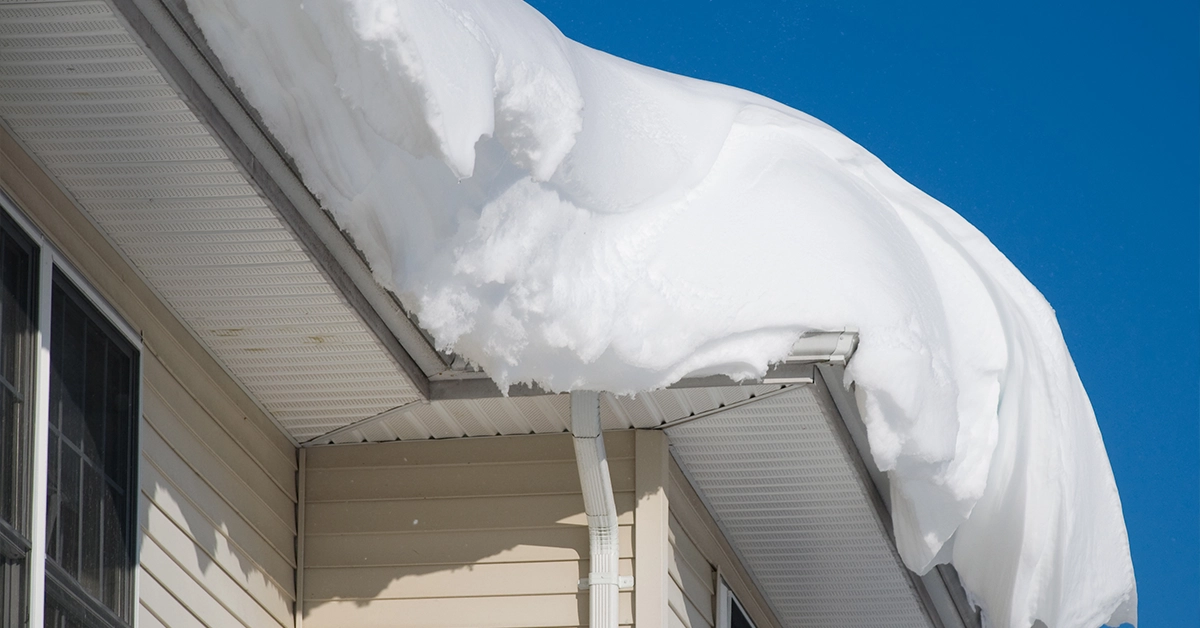Prevent Roof Collapse on Your Home

Before the snow starts to fall and build up on the roof of your house, take the time to know how much snow your roof can support.
Evaluate your risk of roof-top snow/ice accumulation
- Snow usually melts off of steep sloped roofs (slopes greater than 3 inches of slope in 12 inches of horizontal distance) more quickly than flatter roofs.
- Know the lower sloped areas and flatter roofs of your home. Ice and snow will typically accumulate more quickly on low slope and flat roofs.
Estimate how much weight your roof can support
- House roofs should support 20 lbs./square foot of snow before they become stressed.
- Local building codes dictate the snow load required for residential roofs. Contact your local building code department to determine the snow load requirements for your area.
Estimate the weight of snow on your roof
- Saturated snow weighs about 20 lbs./cubic foot.
- Use this basic formula as a guide, but always check with your local weather experts regarding the type of snow that typically occurs in your area:
- (S)1.25 = P, where (S) is the number of inches of snow on your roof, and P is the pounds per square foot of that snow.
- On average, two feet of snow can equal up to 19 tons of weight on your roof, which can significantly weaken the structure.
Consider removing accumulated snow from your roof to avoid collapse
- Rain, sleet, and ice add to the weight of existing snow.
- It is not advisable for a person to climb onto a snow- or ice-covered roof to remove accumulations. Not only could the additional human weight cause the roof to collapse, but the slippery and unstable roof could be very dangerous. Always exercise caution and safety when considering removing snow from a roof, and, if in doubt, contact a professional.
- The best option is to use a roof rake with an extended handle to pull snow from the roof to the ground.